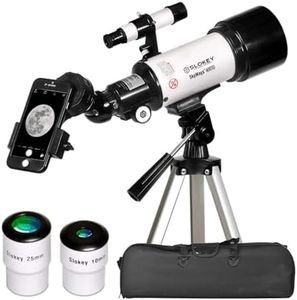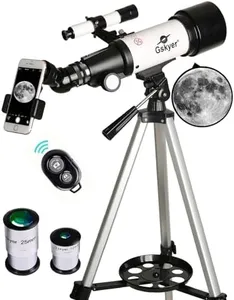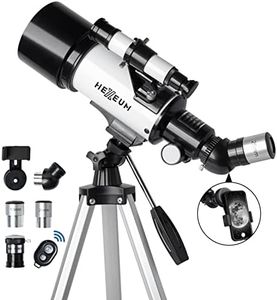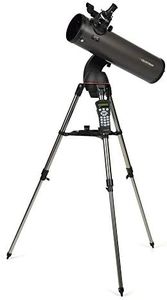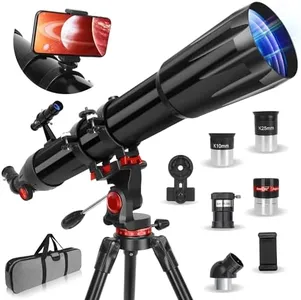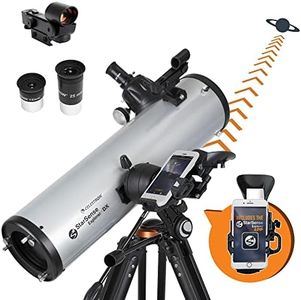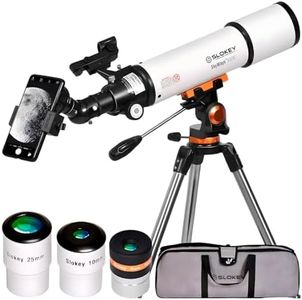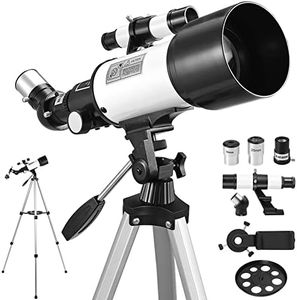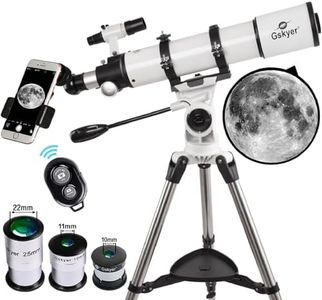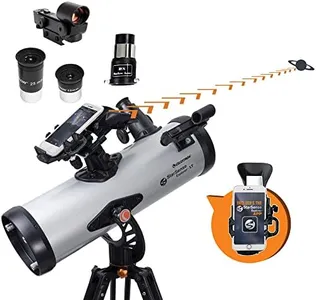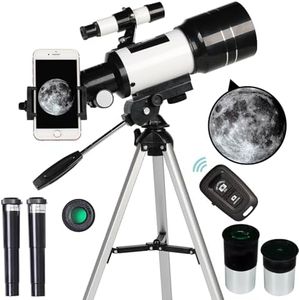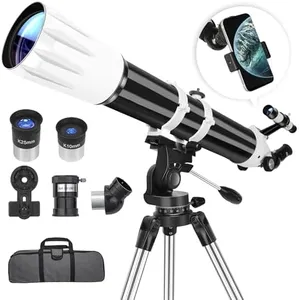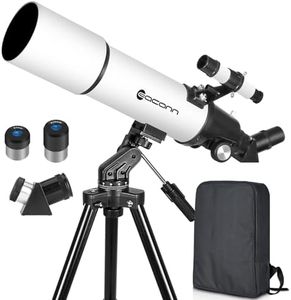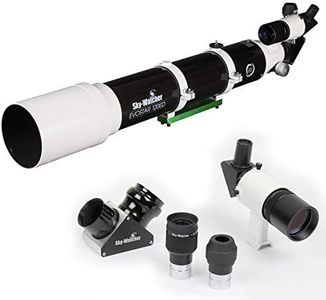10 Best Portable Telescopes 2025 in the United States
Recommended lists
Our technology thoroughly searches through the online shopping world, reviewing hundreds of sites. We then process and analyze this information, updating in real-time to bring you the latest top-rated products. This way, you always get the best and most current options available.

Our Top Picks
Winner
Gskyer Telescope, 70mm Aperture 400mm AZ Mount Astronomical Refracting Telescope for Kids Beginners - Travel Telescope with Carry Bag, Phone Adapter and Wireless Remote.
Most important from
21607 reviews
The Gskyer Telescope is well-suited for beginners and kids interested in astronomical observations. With a 70mm aperture and a 400mm focal length, it offers decent optical quality, allowing users to explore stars and the moon with clear and bright images. The fully coated optics glass lens enhances image clarity and protects the eyes.
This telescope comes with two eyepieces and a 3x Barlow lens, providing versatile magnification options, and a 5x24 finder scope to help locate objects easily in the night sky. The wireless remote and smartphone adapter are great for capturing and sharing celestial images, making the experience interactive and fun. Additionally, the adjustable tripod and carry bag enhance the portability aspect, making it convenient for travel and storage.
However, the Altazimuth mount, while easy to use, may not be as stable or suitable for advanced astronomical tracking compared to more sophisticated mount types. At 5.7 pounds and with dimensions of 24.8 x 4.92 x 8.46 inches, it's lightweight and compact, adding to its portability. This telescope is a solid choice for those starting out in astronomy, offering a good balance of features and ease of use at a beginner-friendly price point.
Most important from
21607 reviews
Telescope for Kids & Adults - 70mm Aperture 500mm AZ Mount Fully Multi-Coated Optics Astronomical refracting Portable Telescopes, with Tripod Phone Adapter, Carrying Bag, Remote Control White
Most important from
3929 reviews
The HEXEUM 70mm Aperture 500mm AZ Mount Telescope is a versatile option suitable for both kids and adults who are beginners in astronomy. One of its major strengths is its 70mm aperture and 500mm focal length, which provide clear and impressive views. The fully multi-coated optics protect the eyes and enhance the viewing experience. The telescope includes two eyepieces (25mm and 10mm) along with a 3x Barlow lens, offering high magnification options. Additionally, the 5x24 finderscope aids in locating objects more easily, which is a great feature for beginners.
The telescope is highly portable, thanks to its lightweight design (4.99 pounds), adjustable aluminum tripod, and carrying case. The inclusion of a phone adapter and a wireless remote control makes it even more user-friendly for capturing images and sharing them. However, the Altazimuth mount (AZ) may have limitations in terms of stability and smoothness when tracking celestial objects compared to an equatorial mount (EQ).
While the optical quality is good for beginners, more advanced users might find it lacking in comparison to higher-end models. The package makes it a great gift option, encouraging learning and exploration without screen time. This telescope is a well-rounded choice for anyone starting their journey into astronomy, though it may not meet the needs of advanced astronomers seeking higher precision and stability.
Most important from
3929 reviews
Celestron 31145 NexStar 130SLT Portable Computerised Newtonian Reflector Telescope with Quick-Release Fork-arm Mount, Accessory Tray and 'Starry Night' Special Edition Software, Grey
Most important from
2109 reviews
The Celestron NexStar 130SLT is a computerized telescope designed for both beginners and more advanced users. One of its key strengths is its 130mm aperture, which allows for detailed views of celestial objects like Saturn’s rings, Jupiter’s cloud bands, and the Moon. The computerized hand control with a database of over 4,000 celestial objects makes locating and tracking stars and galaxies straightforward, while the SkyAlign technology simplifies initial setup. This makes it user-friendly, even for those who are new to stargazing.
The Newtonian Reflector design ensures good optical quality for both planetary and deep-sky observations. Additionally, the included StarPointer red-dot finderscope aids in manually locating objects before switching to computerized tracking. Portability is a major advantage, given its compact design and lightweight build at 11.4 pounds, making it suitable for camping trips and quick setup at different viewing sites.
However, the Altazimuth mount, while easy to use, might not provide the stability and precision required for more detailed astrophotography compared to an equatorial mount. The manual focus and reliance on battery power could also be seen as drawbacks for some users. With a free Starry Night software download and a strong two-year warranty backed by Celestron’s customer support, it offers good value. This telescope is best suited for those looking for a portable yet powerful device that's easy to set up and use, particularly for casual and moderately serious observing.
